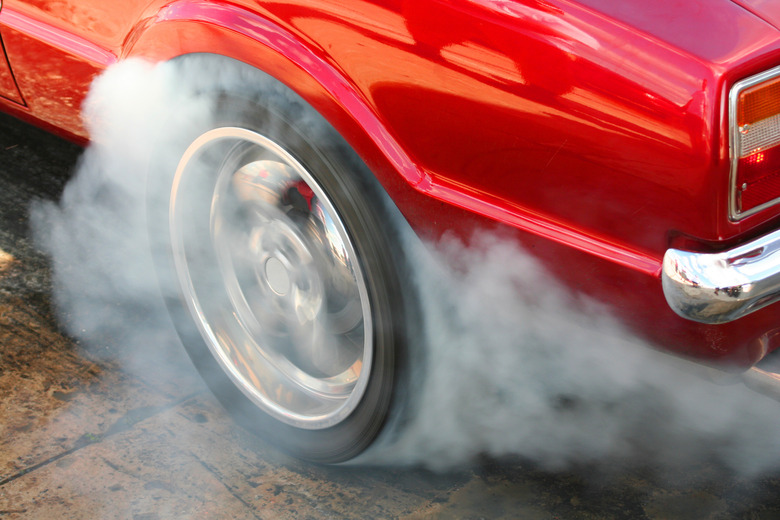How To Melt Rubber Tires
If you put a rubber tire in a furnace – even a hot one – it won't melt. The tires are vulcanized, which means they've been through a process that combines the rubber molecules with carbon and other elements to prevent them from oxidizing, or burning. It's why hot rodders can "burn rubber" without setting anything on fire. The conventional way to recycle tires is to freeze them and pound them into tiny pieces, but the rubber industry has developed a method to extract rubber from tires using heat. The process is done completely without oxygen.
Melting Tires Is Like Unbaking Bread
Melting Tires Is Like Unbaking Bread
Vulcanization involves kneading rubber with other ingredients, including oils, carbon fillers and plasticizers, and then heating it at high temperatures. The polymers in the mixture become cross-linked during the process, and after that happens, you can't undo the links. It's similar to the cross-linking that occurs when polyurethane dries. Every painter knows that once a polyurethane coating has cured, you can't melt it with solvents; if you want to remove it, you have to scrape it off. Another analogy comes from the kitchen. After you combine flour, water and yeast into bread, you can't recover those ingredients by heating the bread or dissolving it in water.
How Are Old Tires Recycled?
How Are Old Tires Recycled?
Americans discard approximately 100 million tires every year, which begs some type of recycling method to prevent overloading landfills. A common method is to chop the tires into half-inch pieces and mix the pieces with liquid nitrogen at a temperature of minus 148 degrees Fahrenheit (minus 100 degrees Celsius). This procedure makes them brittle and easy to crush into a fine powder with particles averaging about 180 microns in diameter. This process, known as cryogenic grinding, produces a powder that mixes readily with other materials, including asphalt, paint, plastic and new rubber tires. It still won't burn, though.
The Pyrolisis Process
The Pyrolisis Process
Although you can't turn bread back into flour and yeast, you can recover some of the original ingredients in tires by heating them in a special furnace. The process is called pyrolisis, and it's based on the principle that if you heat tires without oxygen, they will decompose to a point that the original ingredients are recoverable.
Pyrolisis has been used for 300 years to refine coke from coal, but it has drawbacks. One is that the recovered materials are seldom pure. Another is that it requires a large amount of energy, and a third is that the furnace can explode if oxygen gets in.
A Swedish recycling company overcomes these drawbacks with an innovative approach. It uses a closed system to prevent the introduction of oxygen, and it recycles the energy needed for start-up by introducing new rubber to the already heated gases. At 1,112 degrees Fahrenheit (600 degrees Celsius), the gases are hot enough to melt the new rubber almost immediately, which results in cleaner separation of the melted rubber from gases and other aggregates.
Uses for Scrap Rubber
Uses for Scrap Rubber
Whether obtained from cryogenic grinding or from pyrolisis, scrap rubber still contains impurities that make it unsuitable for molding directly into new tires. However, tire manufacturers often use it as an additive, and recycled rubber is a common ingredient in rubberized asphalt, which is used to make new roadways, sidewalks and playground pads. For this reason, it's a sought-after commodity. Moreover, the steel that helps tires maintain their shape can be recovered and recycled into new steel.
Cite This Article
MLA
Deziel, Chris. "How To Melt Rubber Tires" sciencing.com, https://www.sciencing.com/melt-rubber-tires-7552030/. 13 March 2018.
APA
Deziel, Chris. (2018, March 13). How To Melt Rubber Tires. sciencing.com. Retrieved from https://www.sciencing.com/melt-rubber-tires-7552030/
Chicago
Deziel, Chris. How To Melt Rubber Tires last modified March 24, 2022. https://www.sciencing.com/melt-rubber-tires-7552030/
